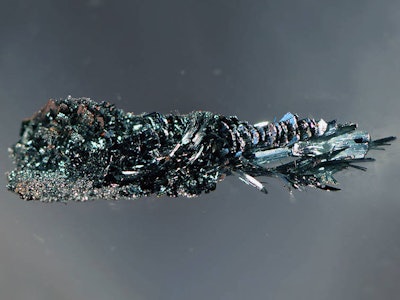
 German scientists developed a new ultra-thin material that could provide another option for replacing silicon in electronic devices.
German scientists developed a new ultra-thin material that could provide another option for replacing silicon in electronic devices.
Silicon for decades served as the material of choice in electronics production, but the element is hard, brittle and approaching its size constraints.
A possible replacement emerged with the development of graphene, a thin layer of carbon atoms that helped British scientists win the Nobel Prize for physics in 2010.
This week, chemists from the Technical University of Munich announced another potential alternative. Researchers replaced individual phosphorus atoms with arsenic to create a material called black arsenic phosphorus.
The material doesn't require high pressure in order to produce it, which makes it less expensive and more energy efficient, and it could provide the flexibility needed to incorporate electronics into other objects.
In addition, black arsenic phosphorus behaves like a semiconductor; graphene, by contrast, mirrors metals.
Scientists said the material could be used for everything from semiconductors to transistors to sensors. A partnership between TUM, the University of Regensburg, Yale University and the University of Southern California produced the first field transistor from the substance.
"This allows us to produce materials with previously unattainable electronic and optical properties in an energy window that was hitherto inaccessible," said TUM Professor Tom Nilges.






















